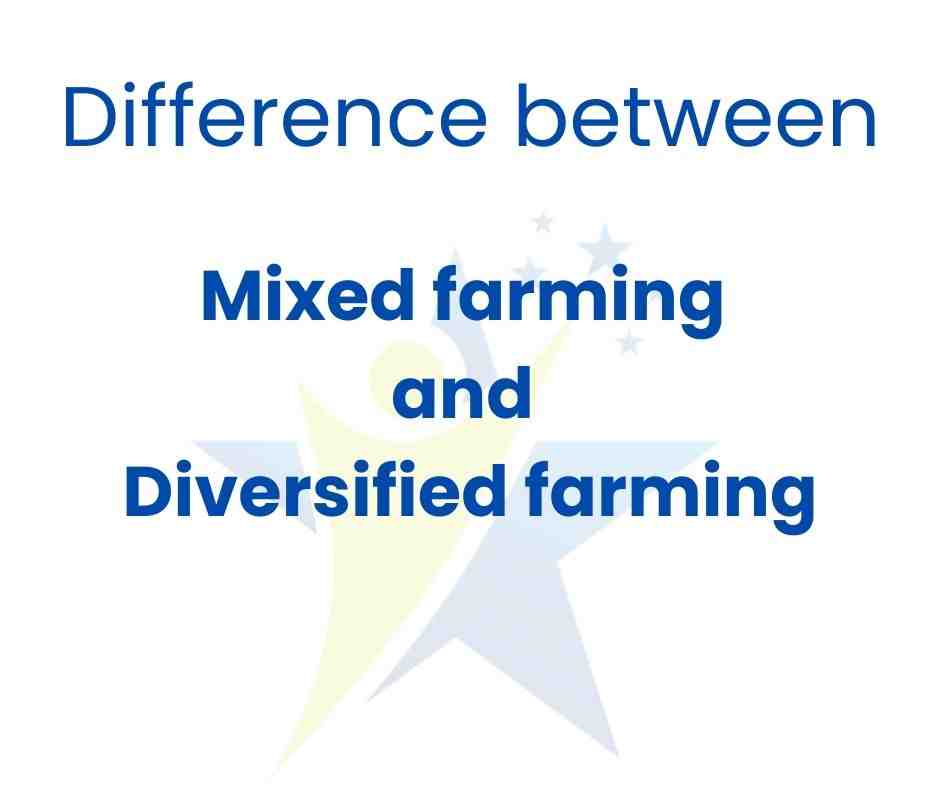Difference between mixed and diversified farming, mixed farming, diversified farming, percentage of income
Mixed farming
Mixed farming is one which crop production is combined with the rearing of livestock. The live stock enterprises are complementary to crop production; so as to provide a balance and productive system of farming.
Indian mixed farming
In mixed farming at least 10% of its gross income must be contributed by livestock activity. The upper limit being 45% under Indian condition. So the farm on which at least 10 to 49% income is found from livestock is called mixed farm. In mixed farming cow and buffaloes are included with crop production.
Diversified farming
If farmers are rearing cows, buffaloes, sheep goat, and fisheries with crop cultivation this type of farming is called diversified farming. The scope of mixed farming to combination of crops and their complementary livestock enterprises of mixed farming would certainly include a vast majority of our farms, establishing a complementary relationship between crop and livestock enterprises.
Difference between mixed and diversified farming
Difference between mixed and diversified farming
| Enterprises | Contribution to gross income | Farming type |
|---|---|---|
| Cow and Buffalo only | 10 to 49% | Mixed farming |
| Cow, buffalo and poultry only | 10 to 49% | Diversified farming |
Mixed farming advantages and disadvantages
Advantages of mixed farming
- It offers highest return on farm business, as the by products of farm are properly utilized.
- It provides work throughout year.
- Efficient utilization of land, labour, equipment and other resources.
- The crop by products such as straw, bus, fodder etc. is used for feeding of livestock and in return they provide milk.
- Manures available from livestock maintain soil fertility.
- It helps in supplying all the food needs of the family members.
- Intensive cultivation is possible.
- If one source of income is lost he can maintain his family from other source of income.
- Milk cattle’s provide draft animals for crop production and rural transport.
- Mixed farming increases social status of the farmer.
Difference between mixed and diversified farming
In India the livestock is much closed connected with agriculture because animal power is the main source of power in agriculture. FYM is the main source for maintaining soil fertility and animals make good use of subsidiary and by-products on farms and in turn they provide milk under such circumstances mixed farming will most suit in Indian conditions.
Disadvantages of mixed farming
- Indigenous method of cultivation is used till now.
- Draft and milch animals should be sold when they fail in production.
- Healthy calf should be reared to replace age old animals
Requirements of Mixed Farming
i) Complicated management practices.
ii) Sound cropping scheme.
iii) Good cattle in suitable number.
iv) Transport facility.
v) Marketing facilities.
Difference between mixed and diversified farming
Difference between dryland farming and rainfed farming | Link
A competitive book of agriculture by nem raj sunda | link

